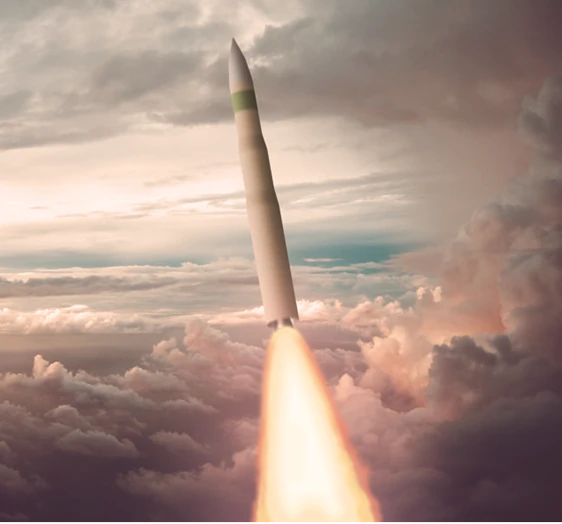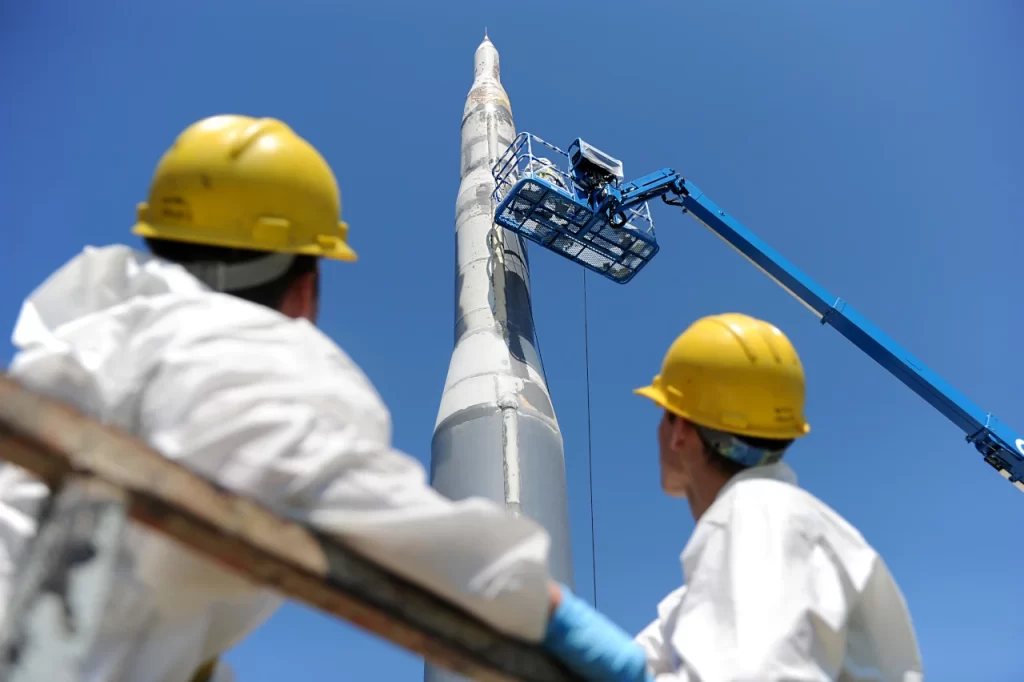The United States Air Force has terminated Colonel Charles Clegg, the director of the Sentinel intercontinental ballistic missile (ICBM) development program. The program’s projected cost increased by at least 37% and surpassed $131 billion, resulting in his removal.
Fired Director, Soaring Costs Signal Major Problems
As per Bloomberg, the dismissal was attributed to the Air Force’s “loss of confidence in project management” and was not explicitly related to the ongoing investigation by the US Congress into the reasons for the rapidly increasing costs of the new-generation ICBM program. Nevertheless, the news report states that this action is likely to increase congressional skepticism regarding the management of the attempt to replace the aging Minuteman III missiles as the land-based component of the nation’s nuclear triad.
The House Appropriations Committee expressed its “shock” at the increase in the cost of the entire program, which includes extensive construction related to launch facilities, in its report on the Department of Defense’s budget request for the 2025 fiscal year.
The committee acknowledged the technical challenges and complexity of a project of this magnitude. However, they expressed concern that the issues that “leading to critical cost overruns were not identified earlier.” They also noted “the lack of continuity” in managing the important program, such as “Sentinel contributes to low program efficiency, cost overruns, and schedule delays.”
Defense Secretary Lloyd Austin must recertify the ICBM program by July 9, or it will be terminated.
The LGM-35A Sentinel ICBM development program, which is currently being conducted in the interest of the US Air Force, has encountered significant and unexpected challenges, according to US Air Force Secretary Frank Kendall, during an online conference organized by the Center for a New American Security earlier this year.
The Sentinel missile, designed to replace the LGM-30G Minuteman III land-based ICBMs, was initially plagued by development issues, as reported in June 2023. Bloomberg reported at the time that the Pentagon caused a minimum of a year’s delay in the deployment of the Sentinel ICBM due to personnel shortages and logistical complications, citing data from the US Government Accountability Office (GAO).

Northrop Grumman Corporation is responsible for the project development. The company encountered challenges “due to a lack of personnel, delays in processing permits, and issues with classified information technology infrastructure,” as stated in the GAO report.
According to the GAO report, an audit identified numerous deficiencies in the missile’s deployment schedule, rendering it impossible to comply with the previously established timeline.
The Minuteman III missile, which was deployed more than fifty years ago, is the sole ICBM in the United States arsenal. In five states in the upper Midwest of the United States, underground silos contain four hundred of these ICBMs.
Technical Challenges
US Strategic Command Commander Charles Richard stated two years ago that (further) extending the service life of these missiles is not economically feasible and soon will be impossible.
During a videoconference with the Defense Writers Group, the senior official unequivocally declared that it is no longer feasible to extend the lifespan of the Minuteman III missile system. He emphasized the technology’s extreme age, pointing out that the original schematics are frequently unavailable. Blueprints are severely obsolete, approximately six generations behind current industry standards, in the cases where they do exist. The official also noted that the technical experts who fully understood these systems are no longer alive, which further complicates any prospective life extension efforts.
Richard categorically rejected proposals from numerous American think organizations to extend the service life of the Minuteman III in order to save money on the Sentinel missile development.
The official expressed skepticism toward think tank analysts who offer missile system recommendations without having firsthand experience. He emphasized that it is challenging to make informed decisions about the future of these weapons without personally scrutinizing the intricate components, such as the cables and internal parts of the missiles.
The main obstacle encountered by Northrop Grumman engineers, who are compelled to engage in industrial archaeology and begin the development of a new missile from the ground up, is the absence of the requisite documentation and specialists who can read it.
A generation of engineers and designers who were capable of reading conventional blueprints has either retired or passed away, and the contents of these blueprints are no longer comprehensible to new engineers. Consequently, they are compelled to participate in the process of “industrial archaeology,” which entails the identification and employment of elderly engineers who authored old operating instructions, technical descriptions, and process manuals.
“Unknown Unknowns” Plague Project
Kendall characterized the Sentinel program as exceptionally large and complex, possibly the most significant undertaking in the service’s history. He explained that the project’s initial phase required a comprehensive evaluation to identify necessary replacements and assess the challenges involved. The Secretary expressed frustration with the program’s complexities, acknowledging that this process revealed unforeseen issues, which he referred to as “unknown unknowns.”
The Air Force Secretary’s comments alluded to a well-known statement by former US Secretary of Defense Donald Rumsfeld. This statement, made during Rumsfeld’s tenure under Presidents Ford and George W. Bush, distinguishes between three categories of knowledge: known knowns (information we are aware we possess), known unknowns (areas where we recognize our lack of knowledge), and unknown unknowns (issues we are not even aware that we do not understand).

The US Air Force Secretary suggested that the development of the new ICBM could be highly uncertain by referencing the presence of “unknown unknowns,” as no one is certain of the precise steps that need to be taken.
The principal concern is not financial difficulties. The emergence of “unknown unknowns” in missile technology was predictable.
Seven years ago, the competition to develop the Sentinel ICBM was announced. Boeing and Northrop Grumman were the two largest industrial companies. The Pentagon allocated budgetary resources to initiate a preliminary initiative. Boeing was the most heavily involved party, as it had developed the Minuteman III ICBM that is presently in operation and had signed a 16-year contract for the maintenance of the missiles’ guidance systems this year.
However, Northrop Grumman bought the company that supplies Boeing with solid-fuel rocket engines, so Boeing had to withdraw from the project.
It is now evident that Northrop Grumman is experiencing difficulties with the Sentinel development. It is untenable to transfer the project to Boeing, which has been the subject of global embarrassment as a result of catastrophic accidents and corruption scandals. Additionally, Boeing no longer has the engineers who developed the Minuteman missiles.
In June 2024, a group of scientists from Princeton University urged the Biden administration to stop the development of the Sentinel ICBM, which was initiated in 2020. The rationale was that the new ICBM is still in development; no missiles have been manufactured to date. The Biden administration and Congress should not find this mission to be straightforward. They concluded the program is unnecessary, costly, and potentially hazardous, and it is time to terminate it.
Additionally, the House administration and the Armed Services Committees should evaluate alternatives rather than proceed cautiously. An article published on the Defense One portal by national security experts from Princeton University posits that they will perceive the cancellation of the Sentinel as the sole logical approach to mitigating the risk of accidental nuclear war and halting the inexhaustible escalation of nuclear expenditures.
Warhead Shortages Add to Woes
It’s not just the launchers; Northrop Grumman hasn’t yet developed new warheads. The Sentinel is intended to be equipped with obsolete W-87 warheads, some of which were decommissioned in 2005. The warhead is presently upgrading to the W-87-1 variant; however, it is anticipated to be available by 2030 at the latest. The initial operational Sentinels will be equipped with obsolete W-87 munitions. Nevertheless, the W-87-1 variant cannot be considered “new”; the initial research on this subject was initiated in 1988. Nevertheless, the most detrimental circumstance for the US is its inability to manufacture nuclear warheads in an adequate quantity.
According to GAO, the US is unable to generate an adequate quantity of plutonium pits for its nuclear warheads. The Pentagon aims to manufacture 80 new plutonium pits annually by 2030; however, this is unattainable due to the deterioration of the country’s nuclear infrastructure.
During the Cold War, the Rocky Flats Plant in Colorado, which Westinghouse owned, was responsible for the production of up to two thousand pits annually. In 1989, the facility was closed as a result of a raid conducted by the Environmental Protection Agency and the FBI in response to environmental law violations. In 1992, the FBI initiated an inquiry culminating in a $18.5 million sanction. After being decommissioned, the facility was entirely demolished.
Currently, the US has only one laboratory in Los Alamos capable of producing plutonium pits. However, all work was halted in 2013 due to noncompliance with radioactive material handling regulations.
In 2019, US President Donald Trump directed the National Nuclear Security Administration (NNSA) to recommence the production of nuclear ammunition and increase it to 80 units annually by 2030.
A report by the Institute for Defense Analyses, a nonprofit organization that manages several federally funded research and development centers, declared these NNSA plans unrealistic.
However, producing warheads for four hundred Sentinel missiles will require multiple years, even if the plans to produce several dozen plutonium pits annually are realized. Frank Kendall referred to the “unknown unknown” as the nerve-wracking inability to surmount the shortage of new warheads for the still undeveloped missiles.
A Weakened Triad
In all probability, the old Minuteman missiles will need to be decommissioned due to their complete degradation, even if the Sentinel development continues. In addition, the American defense industry is unable to manufacture modern nuclear ICBMs in an adequate quantity.
